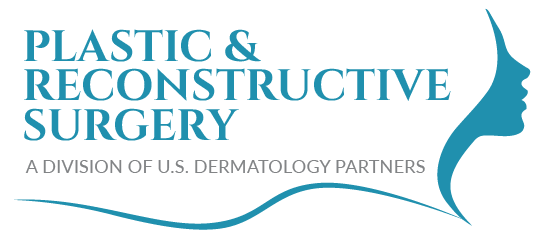Cleft Lip Revision
Cleft lip is a condition that occurs during gestation when the lip does not fully form. Instead, the tissue that comprises the mouth does not fully come together, leaving a cleft or opening in the top lip. For infants and children who have cleft lip, one or more surgeries may be recommended to improve the appearance as well as function during eating and speaking. Most people with cleft lip receive their original surgery as infants or in early childhood, but later in life, further surgical revision may be needed to create a more natural appearance to the upper lip. This procedure is known as a cleft lip revision. On this page, you can learn more about this procedure as well as what to expect following surgery. If you’re ready to learn more about cleft revision, don’t hesitate to contact Plastic & Reconstructive Surgery – a division of U.S. Dermatology Partners to schedule a surgical consultation.
What Is Cleft Lip Revision?
Cleft lip revision is a procedure performed by a facial plastic surgeon to improve the appearance of the mouth following initial cleft lip repair. The goal may be to minimize scarring, reshape the lip, repair deformities, or achieve other goals as outlined by the patient. In addition to making changes to improve the appearance of cleft lip, revision procedures may also be utilized to improve functional concerns, including difficulty with speech and limited facial mobility. Each cleft revision procedure will vary. Before getting started, the cosmetic surgeon will talk through options and ensure the plan meets your needs and desires.
Benefits of Cleft Lip Revision
In early life, cleft lip treatments almost always focus on function. For infants, cleft lip repair is needed to allow the child to eat since a cleft lip can prevent the baby from latching on during feeding. As they get older, learning to speak clearly can be more difficult for those with cleft lip. Addressing these issues is important, but the original surgeries don’t always look the best later in life. As the child continues to grow and change, their repaired cleft may not look or function as well as it originally did. Revision procedures ensure patients look and feel their best for years to come.
Recovery After Cleft Lip Revision
Following cleft lip revision surgery, your surgeon will place dressings as needed and will walk you through how to keep the area clean and when to replace bandages. You will likely experience some discomfort as well as swelling and bleeding for the first few days after the procedure. This discomfort should be well-managed with pain medication. If stitches are needed, they will be removed after about a week. For the first ten days following cleft lip revision surgery, discomfort should diminish as the surgical site heals. After one to two weeks, patients are typically able to resume their daily routine.
Risks Associated with Cleft Lip Revision
Working with a skilled cosmetic surgeon will significantly reduce risks associated with surgical treatment, but there are always some risks with any surgery. It’s important to understand these risks before moving forward with cosmetic surgery.
Some of the risks associated with cleft lip revision include:
- Allergic response to surgical materials like tape, stitches, latex gloves, and topical creams
- Adverse response to anesthesia
- Excessive bleeding that doesn’t improve within a few hours or days after treatment
- Damage to nerves, muscles, and other deeper structures
- Poor healing
- Infection

